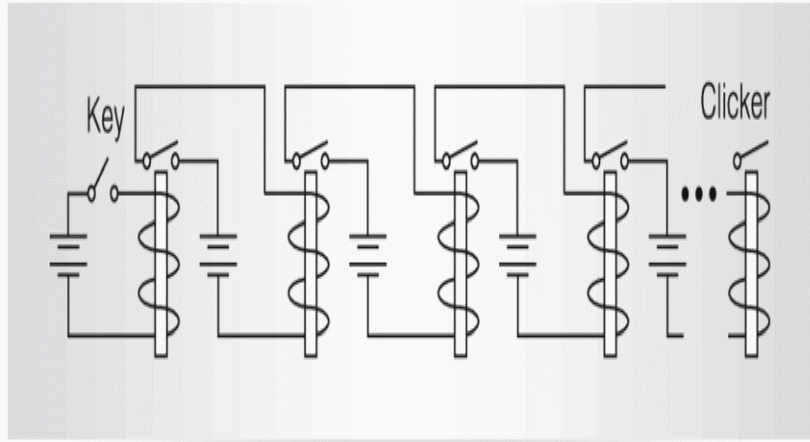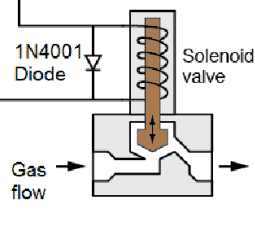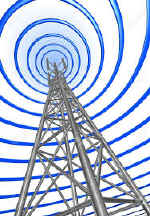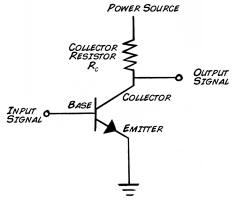The Relay
And it's effect on
Technology
| There are more things in Heaven and
Earth, Horatio, than are dreamt of in your philosophy.
Hamlet |
D Vautier
6/2023
Relays and Communication
 A
relay can be considered a way to magnify or project force. It often applies to
electronics but the term can also be used many other ways. This
discussion primarily focuses on its use in electronics but the
magnification of force has been the basis of all modern social and
technological advancement. You can set one
switch and it causes many switches to react and do something bigger or
more forceful. So by setting just one switch a much larger and more powerful
switch can be activated. Thus it is a way to project or magnify power.
The dam operator can push a button and gigantic spillways open to
release water. An engineer pushes a button and an entire city goes
dark. A bombardier throws a switch and a bomb drops.
A
relay can be considered a way to magnify or project force. It often applies to
electronics but the term can also be used many other ways. This
discussion primarily focuses on its use in electronics but the
magnification of force has been the basis of all modern social and
technological advancement. You can set one
switch and it causes many switches to react and do something bigger or
more forceful. So by setting just one switch a much larger and more powerful
switch can be activated. Thus it is a way to project or magnify power.
The dam operator can push a button and gigantic spillways open to
release water. An engineer pushes a button and an entire city goes
dark. A bombardier throws a switch and a bomb drops.
We obviously live in
a world surrounded by relays where miniature switches in our cell
phones, microwaves, cars, kitchen appliances, and music devices are
constantly at work switching things on and off automatically.
The very first relay
 The
first relay was the lever and people discovered it a long time ago. It
was used to move around big heavy things with less force, like big
blocks for the pyramids. Of course Archimedes came along way later and
established the rules governing the lever but it was certainly in use a
long time before 200 BCE. As long as there was a stick or pole around
you can make a lever out of it. The bigger the stick the better the
lever and the more force it can exert. Iím sure that early humans knew
how to take advantage of fulcrums and force vectors before they made any
rules about it.
The
first relay was the lever and people discovered it a long time ago. It
was used to move around big heavy things with less force, like big
blocks for the pyramids. Of course Archimedes came along way later and
established the rules governing the lever but it was certainly in use a
long time before 200 BCE. As long as there was a stick or pole around
you can make a lever out of it. The bigger the stick the better the
lever and the more force it can exert. Iím sure that early humans knew
how to take advantage of fulcrums and force vectors before they made any
rules about it.
Telegraphy
 With
a better understanding of electricity, the age of electronic discovery
began pell-mell about 1832 with the invention of the telegraph. After
that there was a huge inundation of inventions and contraptions
involving this mysterious and occult science of electricity.
Communication became almost paramount and the world was breathtakingly
caught up in a whirlwind of new inventions that came in rapid
succession.
With
a better understanding of electricity, the age of electronic discovery
began pell-mell about 1832 with the invention of the telegraph. After
that there was a huge inundation of inventions and contraptions
involving this mysterious and occult science of electricity.
Communication became almost paramount and the world was breathtakingly
caught up in a whirlwind of new inventions that came in rapid
succession.
Samuel Morse and his code
arrived on the scene just in time for the civil war, and 40 years later
along came Alex Bell with his telephone and Tom Edison with his light
bulb and phonograph, a huge bunch of achievements in a relatively short
time.
In these rapid days of
discovery, confusion often arises over who did what first but it was
often more a case of who got to the patent office first.
Early Use of relays (or electronic levers or
switches)

Lots of Morseís little electric dots and dashes did not travel very far so
they needed relays, or rather mechanical devices (like levers) that
detected weak signals and re-transmitted them using stronger signals.
The way this worked was simple but involved often unreliable moving
parts. The incoming weak signal acted upon a coil which moved a switch
and sent a stronger new signal out. If all the relays worked as
advertised than a signal got through.
The immediate
trouble of course was the unreliability of early long distance
telegraphy as well as the delays caused by these mechanical devices
clicking an buzzing away. If any repeater (or relay) made a mistake
then that mistake went all the way through the system.
Tools
Inventers soon developed a handbag of tools to
work with this new field of electricity. They found out certain things
could be done with electric voltage and current. These assortment of
tools could be used to play around with the electric signal like
building blocks and gates and slides, hammers, and storage areas.
Copper wire allows electricity to flow normally
but if a graphite filter is put in the way it slows the flow down. This
was called a resister. If two large sheets of conductive
material are very close together but not touching they tend to store
electricity usually for a short time. This device was called
capacitor. A device that allowed current flow just one way was
called a diode. So the toolkit increased including all kinds of
stuff: coils, thermisters, variable capacitors, transducers, etc.
Transducers
 A transducer is a device that
converts an electric signal into mechanical energy or mechanical energy
into an electric signal. The electrical signal can be carried in
different forms, like voltage
strength or frequency change. However the important thing with using an
electric signal is that it's fast, like almost speed-of-light fast, and
involves electrons, not mechanical relays, so it was quite important to
be able to do this conversion from the mechanical to the electrical.
A transducer is a device that
converts an electric signal into mechanical energy or mechanical energy
into an electric signal. The electrical signal can be carried in
different forms, like voltage
strength or frequency change. However the important thing with using an
electric signal is that it's fast, like almost speed-of-light fast, and
involves electrons, not mechanical relays, so it was quite important to
be able to do this conversion from the mechanical to the electrical.
 The key component of
most transducers is a solenoid which consists of a coil of wire wrapped
around a metal cylinder. When electricity flows through a coil
containing a piston, the piston moves back and forth according to the
strength of the signal. If the piston is attached to a big diaphragm
you get a movement of air (a speaker). If it is attached to a valve you
get it to open or close a valve. Working the other way, if the diaphragm
is designed to be moved by sound waves, it drives a piston in a coil of
wire which generates an electrical signal and you get a microphone.
The key component of
most transducers is a solenoid which consists of a coil of wire wrapped
around a metal cylinder. When electricity flows through a coil
containing a piston, the piston moves back and forth according to the
strength of the signal. If the piston is attached to a big diaphragm
you get a movement of air (a speaker). If it is attached to a valve you
get it to open or close a valve. Working the other way, if the diaphragm
is designed to be moved by sound waves, it drives a piston in a coil of
wire which generates an electrical signal and you get a microphone.
The Telephone
 In
1875 or thereabouts Alex Bell, along with many other curious minds I
have to say, was close to solving the transducer problem which was
really the golden fleece of electronics. He built a device that could
change the resistance of a small container of graphite powder through
vibration. He put an electric charge on one end of his container and by
speaking into a cone directed at the container, his voice disturbed the
graphite particles. What came out of the other side of the little
container was a variable voltage stream that happened to corresponded to
the airwaves produced by his voice. On the other end of these wires was
a device which vibrated a diaphragm and produced airwaves that
corresponded to his voice.
In
1875 or thereabouts Alex Bell, along with many other curious minds I
have to say, was close to solving the transducer problem which was
really the golden fleece of electronics. He built a device that could
change the resistance of a small container of graphite powder through
vibration. He put an electric charge on one end of his container and by
speaking into a cone directed at the container, his voice disturbed the
graphite particles. What came out of the other side of the little
container was a variable voltage stream that happened to corresponded to
the airwaves produced by his voice. On the other end of these wires was
a device which vibrated a diaphragm and produced airwaves that
corresponded to his voice.
Of course there was the issue of
distance. After all no practical way existed to transmit the signal
very far. Also the wave pattern of a human voice is quite complex. But
with a lot of voltage it was able to work across town but thatís about
all the farther the phone lines could go. 25 years later an answer
arrived.

Vacuum tubes.
So how can a very weak complex
electronic signal carrying the human voice get amplified so that it can
travel over long distances by wire and not get lost? The answer was the
vacuum tube. It was a pretty huge step in science because the device
was able to accurately amplify complex electric signals. This opened
the door to the many possibilities and uses of electricity to carry
actual sound by wire all over the world.
 A
vacuum tube is just that, an airless glass container with a bunch of
elements and filaments inside. These elements can be complex and can
have multiple uses but the basic tube consists of an anode, a grid and a
cathode. The cathode element gets hot and emits electrons in a vacuum.
The anode is positively charged and likes to absorb electrons. However
there is a grid in between these two elements which acts as a
gatekeeper. A small change in the grid charge produces a large change
in flow from cathode to anode. This became a very accurate amplification
of the original complex signal.
A
vacuum tube is just that, an airless glass container with a bunch of
elements and filaments inside. These elements can be complex and can
have multiple uses but the basic tube consists of an anode, a grid and a
cathode. The cathode element gets hot and emits electrons in a vacuum.
The anode is positively charged and likes to absorb electrons. However
there is a grid in between these two elements which acts as a
gatekeeper. A small change in the grid charge produces a large change
in flow from cathode to anode. This became a very accurate amplification
of the original complex signal.Wireless
 In 1895, a dozen or
so years after telephones were all the rage,
Marconi invented a wireless
way to send dots and dashes a few miles. He did this by actually
boiling photon packets off an antenna at a given frequency to create
EMF.
The receiving device was set to accept the same frequency. It
worked and got better quickly. Originally it was just able to send
dots and dashes but soon evolved into radio which carried speech and
music.
In 1895, a dozen or
so years after telephones were all the rage,
Marconi invented a wireless
way to send dots and dashes a few miles. He did this by actually
boiling photon packets off an antenna at a given frequency to create
EMF.
The receiving device was set to accept the same frequency. It
worked and got better quickly. Originally it was just able to send
dots and dashes but soon evolved into radio which carried speech and
music.Transisters
 A
transistor is a solid state device that works very much like a vacuum
tube. It amplifies electrical signals. The current goes from the
emitter to collector through the base. When the voltage in the base
changes it effects the flow. So small changes in base voltage cause
large changes in the current and voltage flowing to the collector
A
transistor is a solid state device that works very much like a vacuum
tube. It amplifies electrical signals. The current goes from the
emitter to collector through the base. When the voltage in the base
changes it effects the flow. So small changes in base voltage cause
large changes in the current and voltage flowing to the collector
In a way transistors were
nothing more than a miniaturization of the vacuum tube. But what was
big, clumsy, hard to move, slow, delicate, hot and burned out easily
became small, robust, durable, portable, very fast and did not require
heat. The best part was that the transistor fit nicely into the
existing development of electrical science.
Computers
 Computers
didnít just suddenly happen. The idea of these devices has been around
for a long time. We just needed technology to make them work better and
faster and do more stuff. Mechanical computers like adding machines,
sorting machines and an entire array of tabular processing machines,
or TAB was highly developed by the early nineteen hundreds. All the
wiring, vacuum tubes, and components just needed to be replaced.
Miniaturization and reliability was really the key. As all these new
replacement components were developed, large circuit boards were simply
shrunk down to inch size chips and laid on top of each other to build
massively powerful integrated circuits (ICs). Huge memory banks
consisting of little doughnut shaped iron core intersected by wires were
replaced by very small capacitors and transistors at almost atomic scale
creating memory chips of unimaginable capacity.
Computers
didnít just suddenly happen. The idea of these devices has been around
for a long time. We just needed technology to make them work better and
faster and do more stuff. Mechanical computers like adding machines,
sorting machines and an entire array of tabular processing machines,
or TAB was highly developed by the early nineteen hundreds. All the
wiring, vacuum tubes, and components just needed to be replaced.
Miniaturization and reliability was really the key. As all these new
replacement components were developed, large circuit boards were simply
shrunk down to inch size chips and laid on top of each other to build
massively powerful integrated circuits (ICs). Huge memory banks
consisting of little doughnut shaped iron core intersected by wires were
replaced by very small capacitors and transistors at almost atomic scale
creating memory chips of unimaginable capacity.
Some thoughts
The world has yet to catch up
with all this technology which has far outstripped our social,
behavioral, religious and political structures. Within 150 years we
have been subjected to so many overwhelming technological advances that
it seems as though we just need to take a break and reflect on where it
is leading us.
 A
relay can be considered a way to magnify or project force. It often applies to
electronics but the term can also be used many other ways. This
discussion primarily focuses on its use in electronics but the
magnification of force has been the basis of all modern social and
technological advancement. You can set one
switch and it causes many switches to react and do something bigger or
more forceful. So by setting just one switch a much larger and more powerful
switch can be activated. Thus it is a way to project or magnify power.
The dam operator can push a button and gigantic spillways open to
release water. An engineer pushes a button and an entire city goes
dark. A bombardier throws a switch and a bomb drops.
A
relay can be considered a way to magnify or project force. It often applies to
electronics but the term can also be used many other ways. This
discussion primarily focuses on its use in electronics but the
magnification of force has been the basis of all modern social and
technological advancement. You can set one
switch and it causes many switches to react and do something bigger or
more forceful. So by setting just one switch a much larger and more powerful
switch can be activated. Thus it is a way to project or magnify power.
The dam operator can push a button and gigantic spillways open to
release water. An engineer pushes a button and an entire city goes
dark. A bombardier throws a switch and a bomb drops. The
first relay was the lever and people discovered it a long time ago. It
was used to move around big heavy things with less force, like big
blocks for the pyramids. Of course Archimedes came along way later and
established the rules governing the lever but it was certainly in use a
long time before 200 BCE. As long as there was a stick or pole around
you can make a lever out of it. The bigger the stick the better the
lever and the more force it can exert. Iím sure that early humans knew
how to take advantage of fulcrums and force vectors before they made any
rules about it.
The
first relay was the lever and people discovered it a long time ago. It
was used to move around big heavy things with less force, like big
blocks for the pyramids. Of course Archimedes came along way later and
established the rules governing the lever but it was certainly in use a
long time before 200 BCE. As long as there was a stick or pole around
you can make a lever out of it. The bigger the stick the better the
lever and the more force it can exert. Iím sure that early humans knew
how to take advantage of fulcrums and force vectors before they made any
rules about it. With
a better understanding of electricity, the age of electronic discovery
began pell-mell about 1832 with the invention of the telegraph. After
that there was a huge inundation of inventions and contraptions
involving this mysterious and occult science of electricity.
Communication became almost paramount and the world was breathtakingly
caught up in a whirlwind of new inventions that came in rapid
succession.
With
a better understanding of electricity, the age of electronic discovery
began pell-mell about 1832 with the invention of the telegraph. After
that there was a huge inundation of inventions and contraptions
involving this mysterious and occult science of electricity.
Communication became almost paramount and the world was breathtakingly
caught up in a whirlwind of new inventions that came in rapid
succession.
 A transducer is a device that
converts an electric signal into mechanical energy or mechanical energy
into an electric signal. The electrical signal can be carried in
different forms, like voltage
strength or frequency change. However the important thing with using an
electric signal is that it's fast, like almost speed-of-light fast, and
involves electrons, not mechanical relays, so it was quite important to
be able to do this conversion from the mechanical to the electrical.
A transducer is a device that
converts an electric signal into mechanical energy or mechanical energy
into an electric signal. The electrical signal can be carried in
different forms, like voltage
strength or frequency change. However the important thing with using an
electric signal is that it's fast, like almost speed-of-light fast, and
involves electrons, not mechanical relays, so it was quite important to
be able to do this conversion from the mechanical to the electrical. The key component of
most transducers is a solenoid which consists of a coil of wire wrapped
around a metal cylinder. When electricity flows through a coil
containing a piston, the piston moves back and forth according to the
strength of the signal. If the piston is attached to a big diaphragm
you get a movement of air (a speaker). If it is attached to a valve you
get it to open or close a valve. Working the other way, if the diaphragm
is designed to be moved by sound waves, it drives a piston in a coil of
wire which generates an electrical signal and you get a microphone.
The key component of
most transducers is a solenoid which consists of a coil of wire wrapped
around a metal cylinder. When electricity flows through a coil
containing a piston, the piston moves back and forth according to the
strength of the signal. If the piston is attached to a big diaphragm
you get a movement of air (a speaker). If it is attached to a valve you
get it to open or close a valve. Working the other way, if the diaphragm
is designed to be moved by sound waves, it drives a piston in a coil of
wire which generates an electrical signal and you get a microphone. In
1875 or thereabouts Alex Bell, along with many other curious minds I
have to say, was close to solving the transducer problem which was
really the golden fleece of electronics. He built a device that could
change the resistance of a small container of graphite powder through
vibration. He put an electric charge on one end of his container and by
speaking into a cone directed at the container, his voice disturbed the
graphite particles. What came out of the other side of the little
container was a variable voltage stream that happened to corresponded to
the airwaves produced by his voice. On the other end of these wires was
a device which vibrated a diaphragm and produced airwaves that
corresponded to his voice.
In
1875 or thereabouts Alex Bell, along with many other curious minds I
have to say, was close to solving the transducer problem which was
really the golden fleece of electronics. He built a device that could
change the resistance of a small container of graphite powder through
vibration. He put an electric charge on one end of his container and by
speaking into a cone directed at the container, his voice disturbed the
graphite particles. What came out of the other side of the little
container was a variable voltage stream that happened to corresponded to
the airwaves produced by his voice. On the other end of these wires was
a device which vibrated a diaphragm and produced airwaves that
corresponded to his voice.
 A
vacuum tube is just that, an airless glass container with a bunch of
elements and filaments inside. These elements can be complex and can
have multiple uses but the basic tube consists of an anode, a grid and a
cathode. The cathode element gets hot and emits electrons in a vacuum.
The anode is positively charged and likes to absorb electrons. However
there is a grid in between these two elements which acts as a
gatekeeper. A small change in the grid charge produces a large change
in flow from cathode to anode. This became a very accurate amplification
of the original complex signal.
A
vacuum tube is just that, an airless glass container with a bunch of
elements and filaments inside. These elements can be complex and can
have multiple uses but the basic tube consists of an anode, a grid and a
cathode. The cathode element gets hot and emits electrons in a vacuum.
The anode is positively charged and likes to absorb electrons. However
there is a grid in between these two elements which acts as a
gatekeeper. A small change in the grid charge produces a large change
in flow from cathode to anode. This became a very accurate amplification
of the original complex signal. In 1895, a dozen or
so years after telephones were all the rage,
Marconi invented a wireless
way to send dots and dashes a few miles. He did this by actually
boiling photon packets off an antenna at a given frequency to create
EMF.
The receiving device was set to accept the same frequency. It
worked and got better quickly. Originally it was just able to send
dots and dashes but soon evolved into radio which carried speech and
music.
In 1895, a dozen or
so years after telephones were all the rage,
Marconi invented a wireless
way to send dots and dashes a few miles. He did this by actually
boiling photon packets off an antenna at a given frequency to create
EMF.
The receiving device was set to accept the same frequency. It
worked and got better quickly. Originally it was just able to send
dots and dashes but soon evolved into radio which carried speech and
music. A
transistor is a solid state device that works very much like a vacuum
tube. It amplifies electrical signals. The current goes from the
emitter to collector through the base. When the voltage in the base
changes it effects the flow. So small changes in base voltage cause
large changes in the current and voltage flowing to the collector
A
transistor is a solid state device that works very much like a vacuum
tube. It amplifies electrical signals. The current goes from the
emitter to collector through the base. When the voltage in the base
changes it effects the flow. So small changes in base voltage cause
large changes in the current and voltage flowing to the collector Computers
didnít just suddenly happen. The idea of these devices has been around
for a long time. We just needed technology to make them work better and
faster and do more stuff. Mechanical computers like adding machines,
sorting machines and an entire array of tabular processing machines,
or TAB was highly developed by the early nineteen hundreds. All the
wiring, vacuum tubes, and components just needed to be replaced.
Miniaturization and reliability was really the key. As all these new
replacement components were developed, large circuit boards were simply
shrunk down to inch size chips and laid on top of each other to build
massively powerful integrated circuits (ICs). Huge memory banks
consisting of little doughnut shaped iron core intersected by wires were
replaced by very small capacitors and transistors at almost atomic scale
creating memory chips of unimaginable capacity.
Computers
didnít just suddenly happen. The idea of these devices has been around
for a long time. We just needed technology to make them work better and
faster and do more stuff. Mechanical computers like adding machines,
sorting machines and an entire array of tabular processing machines,
or TAB was highly developed by the early nineteen hundreds. All the
wiring, vacuum tubes, and components just needed to be replaced.
Miniaturization and reliability was really the key. As all these new
replacement components were developed, large circuit boards were simply
shrunk down to inch size chips and laid on top of each other to build
massively powerful integrated circuits (ICs). Huge memory banks
consisting of little doughnut shaped iron core intersected by wires were
replaced by very small capacitors and transistors at almost atomic scale
creating memory chips of unimaginable capacity.